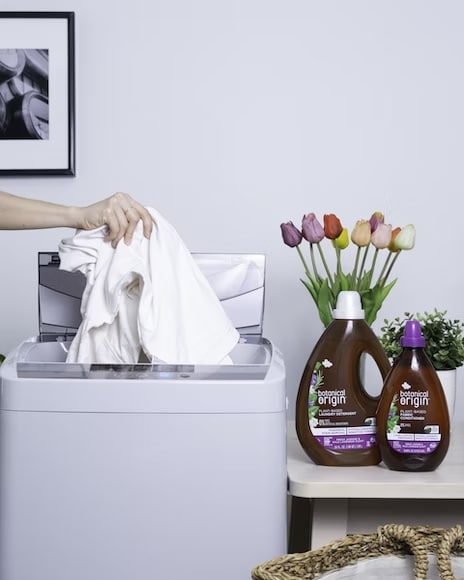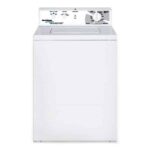When you put a load of wet clothes into the dryer, it should be able to make them dry without getting hot. Despite the fact the dryer might run for an hour to dry the load, it shouldn’t be extremely hot to threaten safety in your home. However, what is the problem if the dryer is not drying clothes, but it’s getting hot?
Table of Contents
Dryer Not Drying Clothes but Getting Hot: Issues and How to Solve Them

Several issues make the dryer heat up and not work as expected. Some reasons include faulty heating elements, too much load, clogged exhaust vents, clogged lint screens, or malfunctioning cycling thermostats.
Most of the problems that make the dryer get hot and not o clean are easy to correct, and you can fix them without spending a lot of money. Below are the common reasons and solutions if your dryer doesn’t dry the clothes completely and it gets very hot on each drying cycle.
Too Much Load
If you remove damp instead of dried clothes from your dryer, you should first check whether you have overloaded the machine. The dryer will work effectively if it’s less than 3/4 full.
Your dryer is overloaded when you hear the drum struggling to spin as soon as you start the dryer. Another indication that the laundry is too much is the squeaking sound produced by the dryer. That means the machine is struggling to make its moves.
Clogged Lint Screen
You’ll probably notice a lot of lint if you inspect the lint screen after you’ve used the dryer. Consequently, it makes sense that dryer manufacturers advise customers to practice cleaning the lint screen after every usage.
The dryer’s capacity to dry the clothing is significantly reduced if the lint screen is obstructed since airflow within the dryer is restricted. Poor lint screen maintenance also increases the possibility of lint infiltrating the dryer’s internal components.
Cleaning the lint screen on a regular basis may enhance the dryer’s performance and might resolve the issue of the dryer heating up but not drying.
Blockage of the Ventilation System
Blockage of the ventilation system at the rear end of the dryer is another typical reason the dryer isn’t drying clothing. Still, it’s heating since dryers need airflow to dry clothes and for thermoregulation.
The dryer’s performance is decreased by restricted airflow, but there is also a risk of a potential fire. The ventilation duct needs to be cleaned at least once a year to ensure that airflow is optimal for properly cooling the machine and drying the laundry.
Before you start the process of cleaning up the ventilation system, you should unplug them wholly from the dryer. Insert moist cloth into the ventilation duct or hose and shake thoroughly to remove even stubborn debris.
A commercial dryer vent cleaning kit is available at an affordable price to help you clean the ventilation duct in style. The dryer vent cleaning kit includes an extensible, flexible brush that slides inside the duct. Another choice is to have the ducts cleaned by experts.
The ventilation duct’s exit location from the house should also be checked. When the dryer is running, a flap on certain ventilation ducts opens. The dryer may heat up but fail to dry if the cover isn’t working properly.
Faulty Heating Element
Your dryer’s heating element is responsible for warming the air to aid in drying the clothes. The dryer’s spinning mechanism and the heating elements work together to dry the garments. The heat source is less unlikely to be the issue if the dryer is heating, but it’s still possible that it’s not functioning as expected.
A multimeter may test the heating element for continuous electrical channels and look for burnt-out or damaged coils. If a heating element is faulty, a new one has to be installed.
Removing the back, top, and front access panels may be necessary to get accessibility to the heating element, based on the type of dryer. Before removing any access panels, turn off the gas or electricity supply.
Malfunctioning Thermostat or Thermistor
A thermistor and a thermostat combination often control the temperature inside dryers. A faulty thermostat or thermistor may limit the heat output or the airflow temperature to help dry the garments if the dryer machine is heating but not drying.
It’s necessary to test each component with a multimeter for continuity to identify whether a thermostat or thermistor is broken. If their continuity is absent, replacing the component will solve the issue. To conduct the multimeter test, you will also need to determine each component’s resistance at room temperature.
As previously described, the back, top, and front dryer panels must be removed to access the thermostats and thermistors. The cycling thermostat is often found near the blower wheel or ventilation exhaust, while the high-limit thermostat is typically found on the heating element component. Remember thermistor is used in place of a cycling thermostat in dryers.
Most heat-producing objects contain a thermostat that controls how much heat is produced or utilized by the device in some other way. These thermostats are commonly seen inside clothes dryers to control the air temperature. Any dryer must maintain a steady flow of hot air within the drum to dry the clothes effectively.
Bulb Up Of Lin inside the Dryer

Lint can accumulate over time within the dryer, particularly near the blower wheel, heating element, and thermostat. The performance of your dryer is not the only factor that you need to take into account. Instead, it would help if you also focused on improving the ventilation system by clearing all the obstructions.
If the lint accumulates within the dryer, there is a chance that the dryer might catch fire if the issue is not solved promptly. Access to the internal components differs depending on the type of your dryer. The dryer’s front, top, and back panels will often need to be removed. Once you can view the dryer’s interior internal dynamics, remove the lint with a vacuum adapter or a cloth.
Before dismantling any access panels, ensure the dryer’s electricity supply is turned off. Additionally, remember to clean your blower wheel since it frequently becomes blocked with lint. The other components that you can check if your dryer is heating up and not drying include:
- Control board
- Moisture sensor
- Timer


